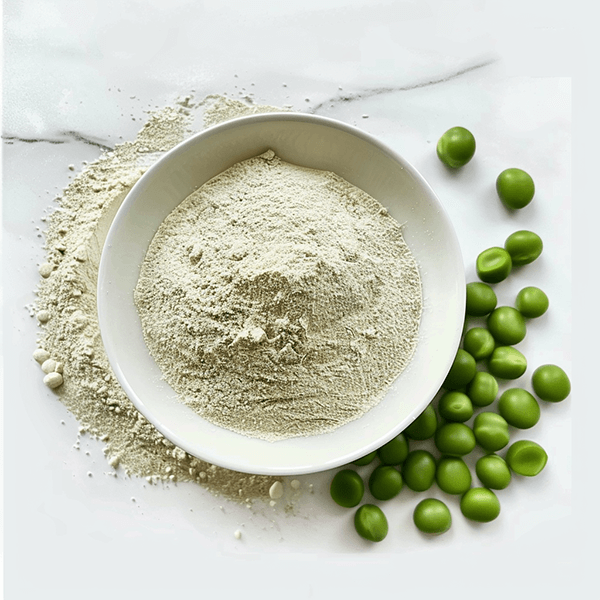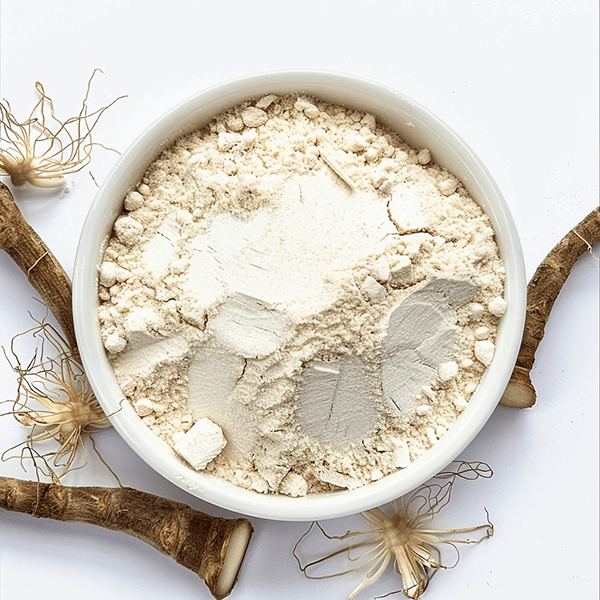A balanced diet is essential for maintaining good health, and dietary fiber plays a crucial role in achieving this balance. Fiber is a type of carbohydrate found in plant-based foods like fruits, vegetables, whole grains, and legumes. It is known for keeping the digestive system healthy, regulating bowel movements, and lowering the risk of developing chronic diseases such as heart disease and diabetes. Despite its importance, many people do not consume enough fiber in their daily diets.
The purpose of this discussion is to compare two different dietary fibers, inulin, and pea fiber, to help individuals make informed choices about which fiber is best suited for their dietary needs. In this article, we will explore the nutritional properties, health benefits, and impact on digestive and gut health of inulin and pea fiber. By understanding the differences and similarities between these two fibers, readers will gain valuable insights into incorporating them into their diets more effectively.
A. Definition and sources of inulin
Inulin is a type of soluble fiber that is found in a variety of plants, particularly in the roots or rhizomes. Chicory root is a rich source of inulin, but it can also be found in foods such as bananas, onions, garlic, asparagus, and Jerusalem artichokes. Inulin is not digested in the small intestine and instead passes to the colon, where it acts as a prebiotic, promoting the growth of beneficial bacteria in the gut.
B. Nutritional properties and health benefits of inulin
Inulin has several nutritional properties that make it a valuable addition to the diet. It is low in calories and has a minimal impact on blood sugar levels, making it a suitable option for those managing their weight and individuals with diabetes. As a prebiotic fiber, inulin helps maintain a healthy balance of gut bacteria, which is important for digestive and immune system health. Additionally, inulin has been associated with improved nutrient absorption, particularly for minerals like calcium and magnesium.
C. Digestive and gut health benefits of inulin intake
The consumption of inulin has been linked to several digestive and gut health benefits. It promotes regular bowel movements and alleviates constipation by increasing stool frequency and softening stool consistency. Inulin also helps reduce the risk of colon cancer by promoting the growth of beneficial bacteria, which in turn inhibits the growth of harmful bacteria that could lead to inflammation and disease.
A. Understanding the composition and sources of pea fiber
Pea fiber is a type of insoluble fiber derived from peas, and it is known for its high fiber content and minimal carbohydrate and fat content. It is obtained from the hulls of peas during the processing of peas for food products. Due to its insoluble nature, pea fiber adds bulk to the stool, facilitating regular bowel movements and aiding in digestive health. Furthermore, pea fiber is gluten-free, making it suitable for individuals with gluten sensitivities or celiac disease.
B. Nutritional value and health benefits of pea fiber
Pea fiber is rich in dietary fiber, particularly insoluble fiber, which contributes to its potential health benefits. It supports gut health by promoting regular bowel movements and preventing constipation. Additionally, the high fiber content in pea fiber can help manage cholesterol levels, thus reducing the risk of heart disease. Moreover, pea fiber has a low glycemic index, meaning it has a minimal impact on blood sugar levels, making it suitable for individuals with diabetes.
C. Comparing the digestive and gut health benefits of pea fiber
Similar to inulin, pea fiber offers digestive and gut health benefits. It helps maintain bowel regularity and aids in the prevention of gastrointestinal disorders such as diverticulosis. Pea fiber also assists in maintaining a healthy gut microbiome by providing a friendly environment for beneficial bacteria to flourish, promoting overall gut health and immune function.
A. Nutritional content and fiber composition of inulin and pea fiber
Inulin and pea fiber differ in their nutritional content and fiber composition, which affects their impact on health and dietary suitability. Inulin is a soluble fiber composed primarily of fructose polymers, while pea fiber is an insoluble fiber that provides bulk to the stool. Each type of fiber offers distinct benefits and may be more suitable for individuals with specific dietary needs and preferences.
B. Considerations for different dietary needs and preferences
When choosing between inulin and pea fiber, it is important to consider individual dietary needs and preferences. For individuals aiming to manage their weight, inulin may be preferred due to its low-calorie and low glycemic index properties. On the other hand, individuals seeking to improve bowel regularity and prevent constipation may find pea fiber to be more beneficial due to its insoluble fiber content and bulk-forming ability.
C. Impact on weight management and blood sugar levels
Both inulin and pea fiber have the potential to impact weight management and blood sugar levels. Inulin's low calorie and low glycemic index properties make it a favorable option for weight management and blood sugar control, while pea fiber's ability to promote satiety and regulate appetite contributes to its potential role in weight management and blood sugar regulation.
A. Factors to consider when incorporating inulin or pea fiber into your diet
When incorporating inulin or pea fiber into your diet, there are several factors to consider, including individual dietary needs, health goals, and any existing digestive or metabolic conditions. It is important to consult a healthcare professional or registered dietitian to determine the most suitable fiber option based on personal health considerations.
B. Practical tips for integrating these dietary fibers into daily meals
Integrating inulin or pea fiber into daily meals can be accomplished through various food sources and products. For inulin, incorporating foods like chicory root, onions, and garlic into recipes can provide a natural source of inulin. Alternatively, pea fiber can be added to baked goods, smoothies, or soups to boost the fiber content of meals.
C. Summary of the key considerations for choosing the right fiber for individual dietary needs
In summary, the choice between inulin and pea fiber should be based on individual dietary needs, health goals, and food preferences. Inulin may be more suitable for individuals looking to manage weight and blood sugar levels, while pea fiber may be preferred for promoting bowel regularity and digestive health.
In conclusion, both inulin and pea fiber offer unique nutritional properties and health benefits that can complement a balanced diet. Inulin provides prebiotic benefits and supports weight management and blood sugar control, while pea fiber aids in promoting gut health and digestive regularity.
It is important to approach dietary fiber intake with an informed and balanced perspective, considering the diverse benefits of different fiber sources and how they may align with individual health needs and preferences.
Ultimately, understanding individual dietary needs is paramount when selecting the appropriate fiber for optimal health and wellness. By taking into account personal health goals and consulting with healthcare professionals, individuals can make informed choices to effectively incorporate inulin or pea fiber into their diets.
In summary, the choice between inulin and pea fiber depends on individual dietary requirements, health objectives, and food preferences. Both fibers have their unique nutritional properties and health benefits, and understanding these distinctions is essential for making an informed decision. Whether it's inulin's prebiotic benefits, weight management, and blood sugar control, or pea fiber's support for gut health and digestive regularity, the key lies in aligning these benefits with individual dietary needs. By considering various factors and seeking professional guidance, individuals can effectively integrate inulin or pea fiber into their diets for improved health and wellness.
References:
1. Harris, L., Possemiers, S., Van Ginderachter, C., Vermeiren, J., Rabot, S., & Maignien, L. (2020). The Pork Fibre Trial: the effect of a novel pea fibre on energy balance and gut health in domestic pigs–metabolomics and microbial indicators in faecal and caecal samples, as well as faecal metabolomics and VOCs. Web Link: ResearchGate
2. Ramnani, P., Costabile, A., Bustillo, A., and Gibson, G. R. (2010). A randomised, double-blind, crossover study of the effect of oligofructose on gastric emptying in healthy humans. Web Link: Cambridge University Press
3. Dehghan, P., Gargari, B. P., Jafar-Abadi, M. A., & Aliasgharzadeh, A. (2014). Inulin controls inflammation and metabolic endotoxemia in women with type 2 diabetes mellitus: a randomized-controlled clinical trial. Web Link: SpringerLink
4. Bosscher, D., Van Loo, J., Franck, A. (2006). Inulin and oligofructose as prebiotics in the prevention of intestinal infections and diseases. Web Link: ScienceDirect
5. Wong, J. M., de Souza, R., Kendall, C. W., Emam, A., & Jenkins, D. J. (2006). Colonic health: fermentation and short chain fatty acids. Web Link: Nature Reviews Gastroenterology & Hepatology
Contact Us:
Grace HU (Marketing Manager) grace@biowaycn.com
Carl Cheng ( CEO/Boss ) ceo@biowaycn.com
Website: www.biowaynutrition.com
Post time: Feb-23-2024







